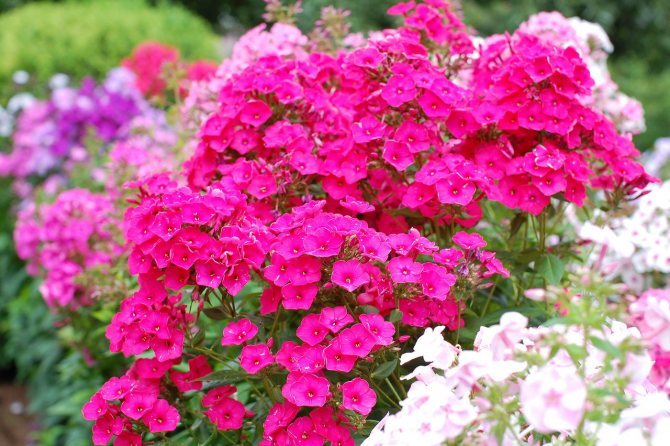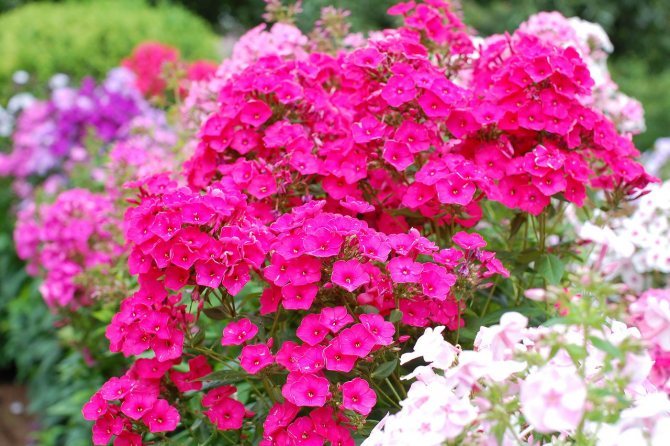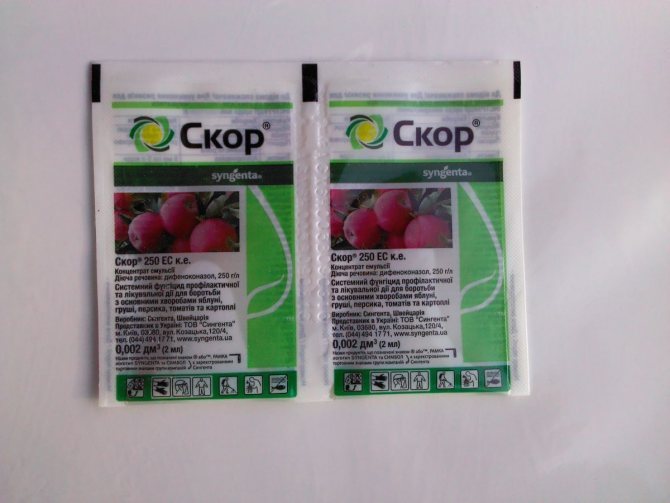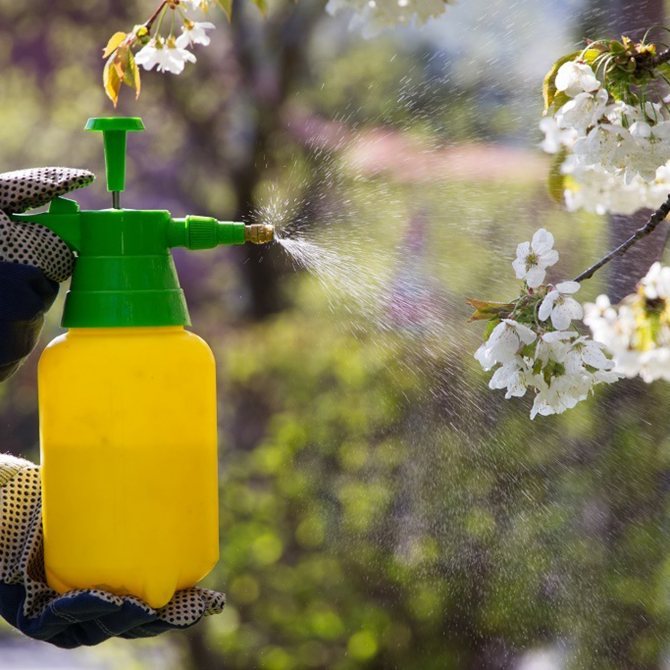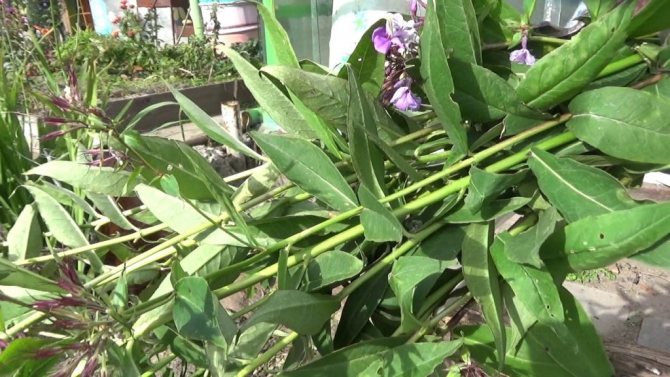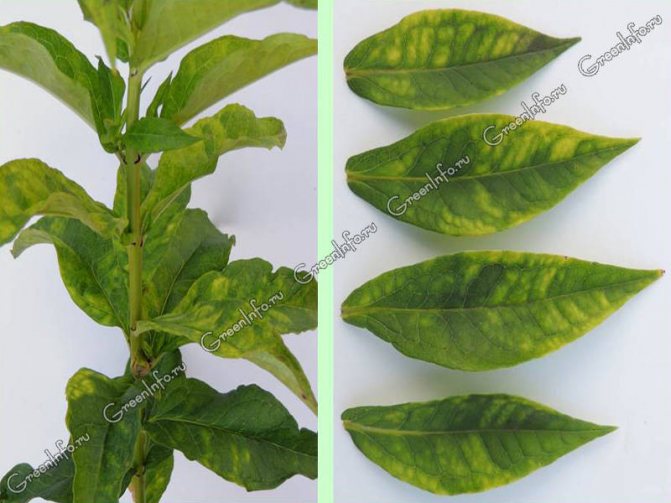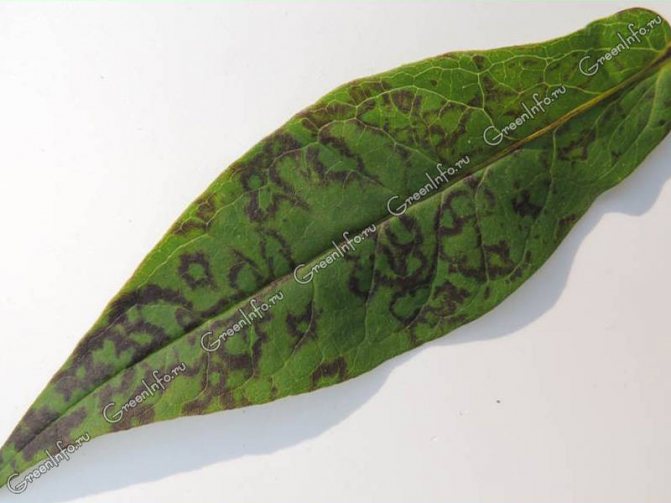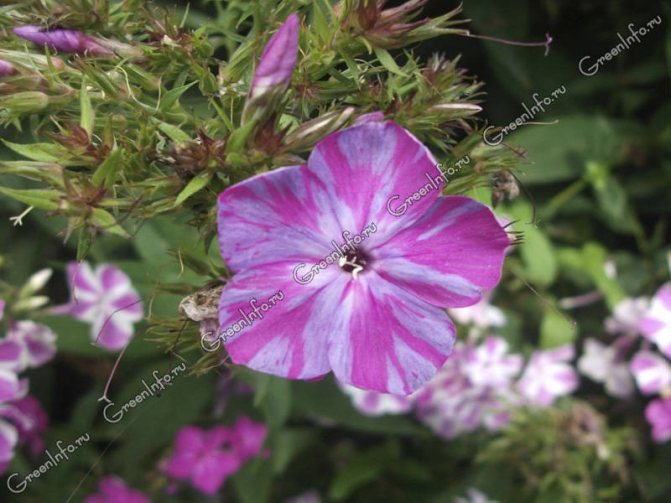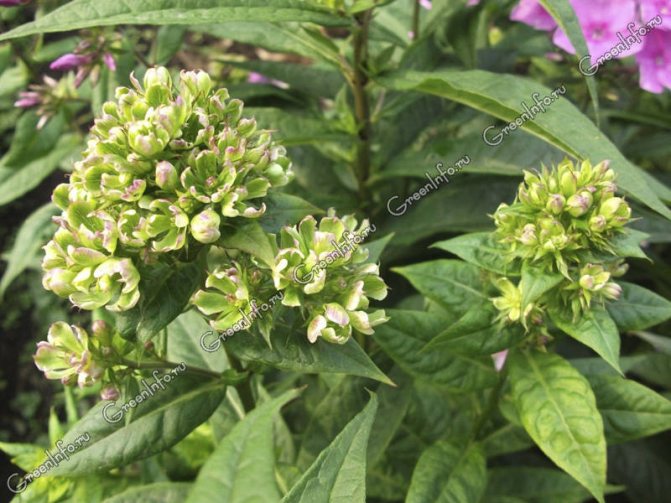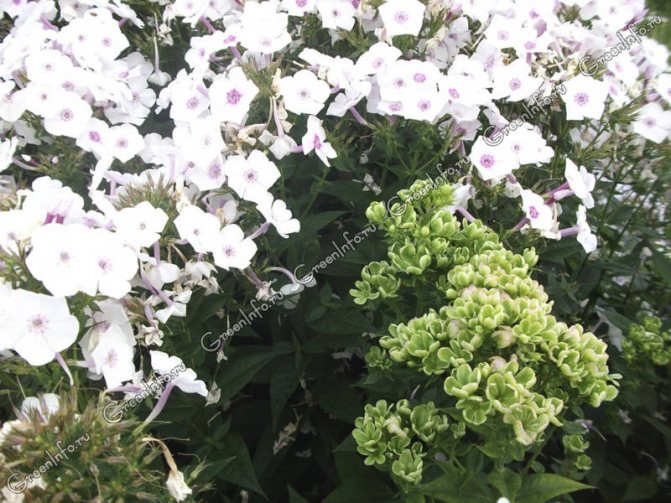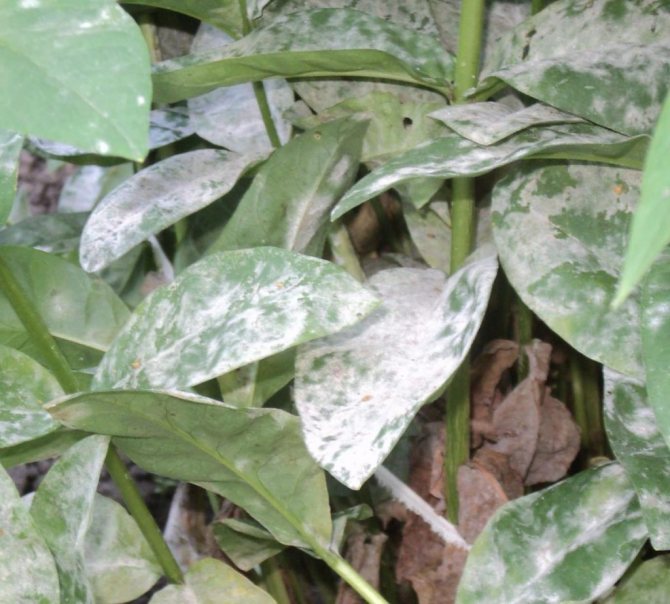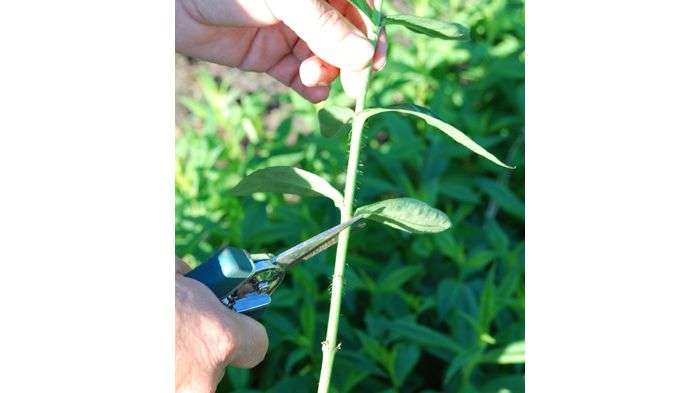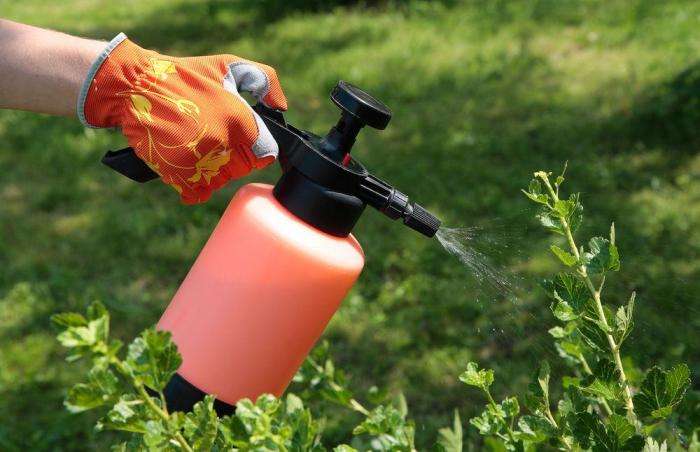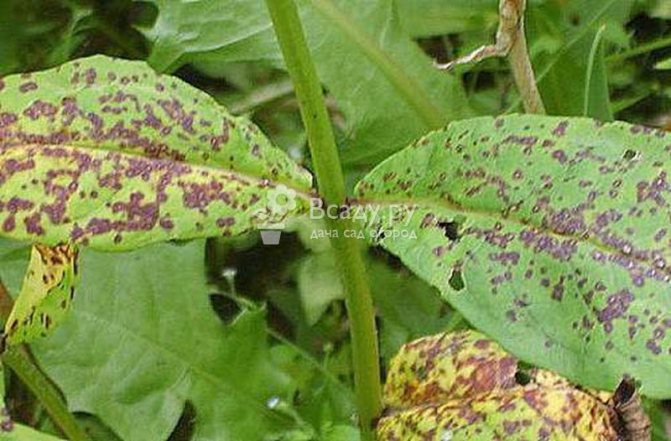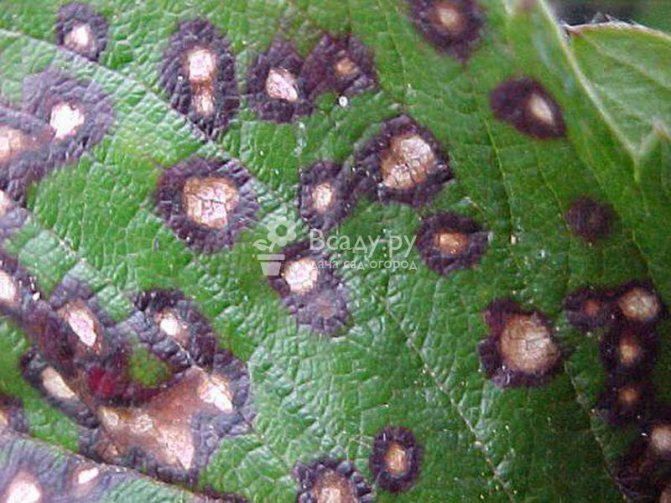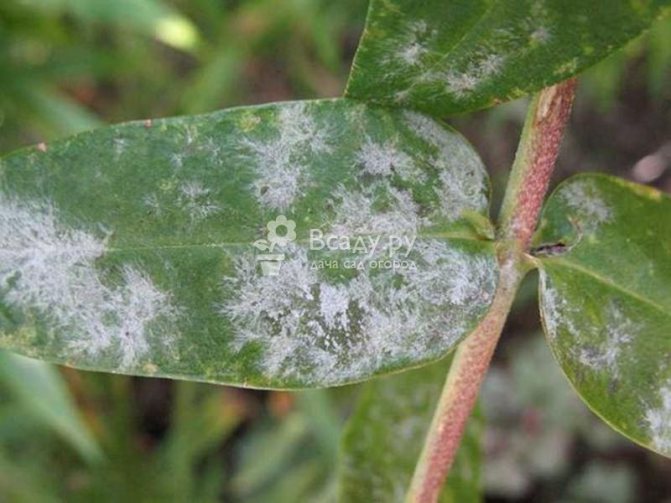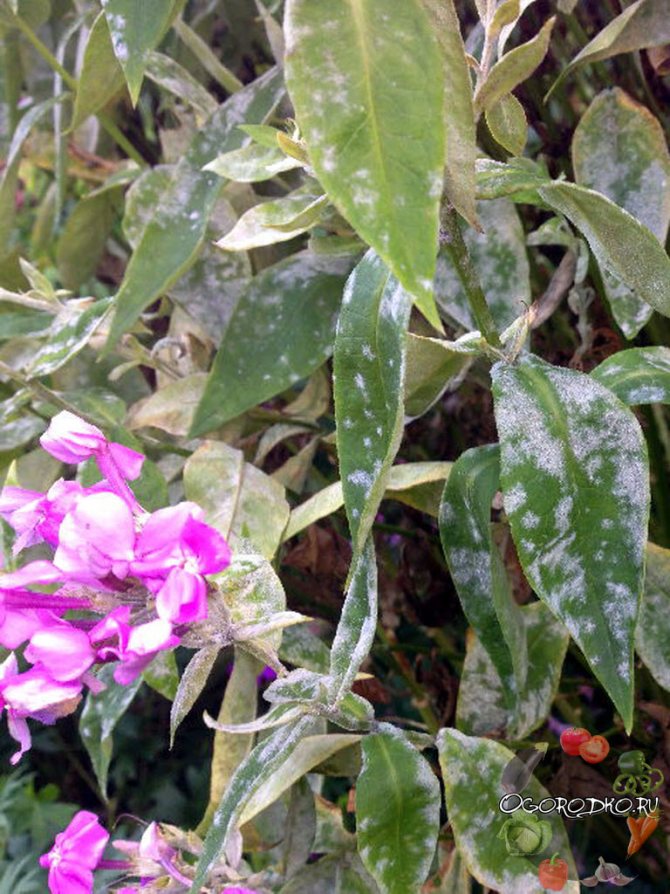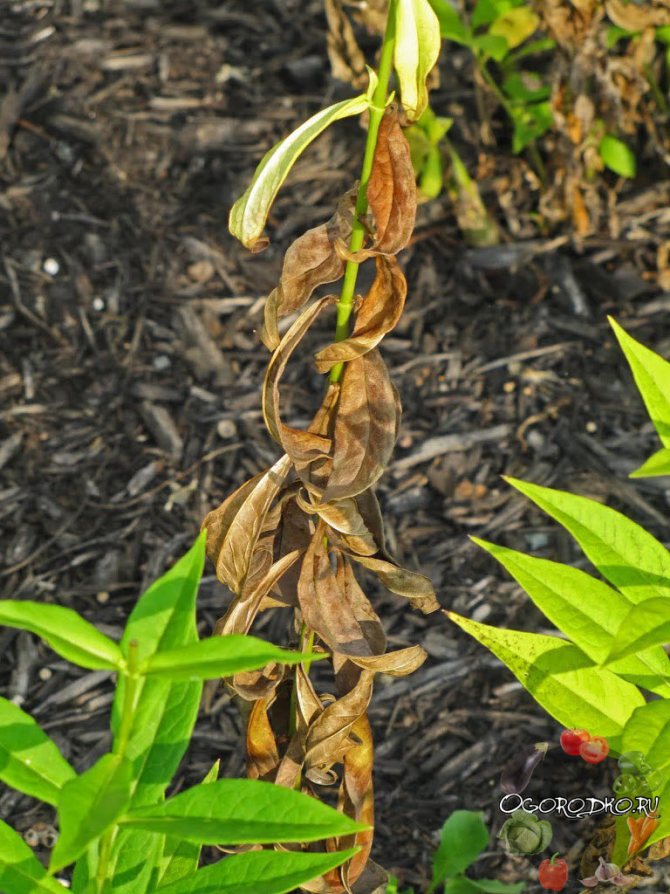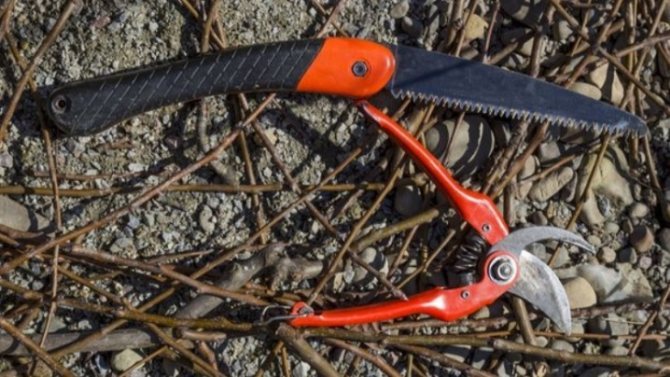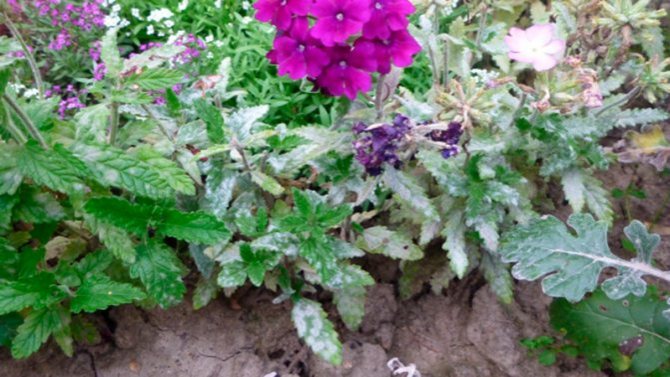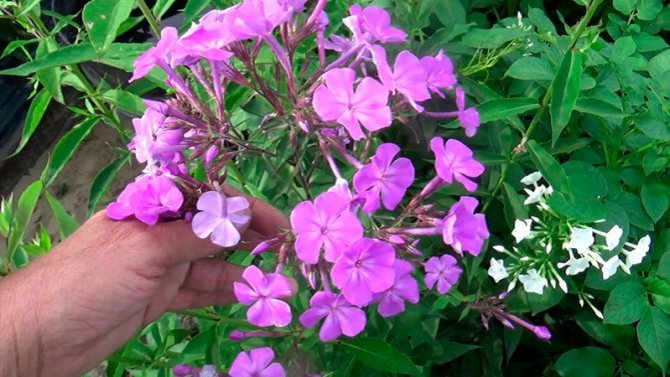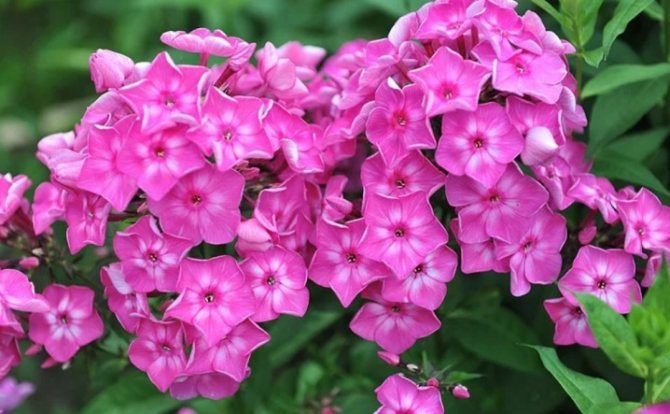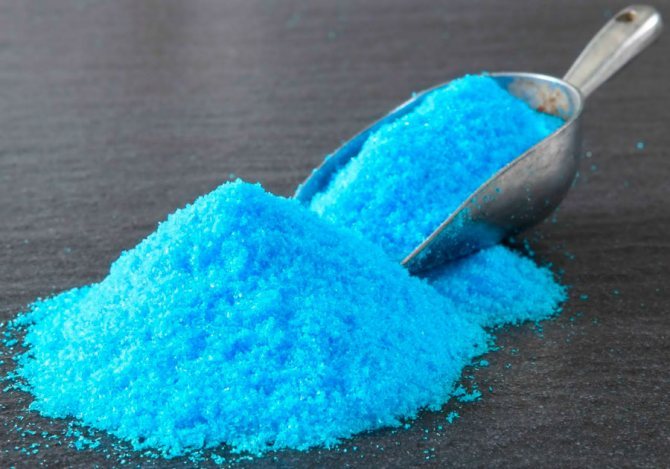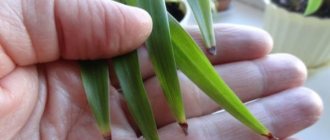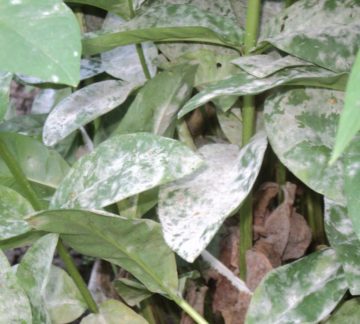
Terry, two-colored, star-shaped - all this is about phlox varieties that bloom in early July and dazzle in the garden until autumn. Perennial and annual representatives of the species do not require intricate care. They only need to be fed with fertilizers, watered on time and renew (divide) the bush every four to six years. Unfortunately, flowers are susceptible to viruses, nematodes, caterpillars, flea beetles and other pests. This undoubtedly spoils their appearance and often leads to the withering away of culture. Phlox diseases with photos and their treatment are described in detail in this article. The selected material will help not only to identify and eliminate the cause of the disease, but also tell you how to save flowers in the future.
The history of the origin of phlox begins in North America. Then in the wild there were several types of spherical pink flowers. Today biologists have more than 80 species. Among them are white, blue, lilac, red, multicolored, orange, blue and purple plants that amaze with brightness and beauty.
Choosing a landing site
Probably, it's not a secret for anyone that many phlox diseases are a consequence of an incorrectly chosen place or soil. That is, the conditions are unsuitable for the life and development of plants. You need to pay attention to the conditions in which phlox grow in the wild. Moreover, the most suitable climate for them is moderately warm and humid. In such places, the soil is loose and very rich in organic elements. Thus, in the garden, it is necessary to choose the appropriate conditions: fertile soil, as well as partial shade from trees or shrubs. Phloxes love the sun, but direct sunlight can be detrimental to them.
Other causes of yellow leaves
Diseases of petunia
The answer to the question of why the lower leaves of phlox turn yellow, what to do, does not always lie in the plane of diseases and infections. A yellow leaf is a bad sign (this is the norm only for the autumn period). It signals that there are problems in the development of the plant, from which growth slows down, the flowering period decreases.
For your information! In nature, there are no yellow phloxes. And the appearance of yellow leaves does not at all fit into the concept of the harmony of these beautiful flowers.
The condition of the plant largely depends on the conditions of growth and care. And the reason why the lower leaves of phlox dry out may be flaws in maintaining agricultural standards. So, an open area is good for phloxes, but such that in the middle of the day, when the sun is at its zenith, the bush is shaded. The plant loves and blooms with beautiful inflorescences in large quantities on fertilized, loose and moderately moist soil. In the absence of at least one of these conditions, the flower withers, it can turn yellow and dry, and then the lower leaves die off.


The condition of the plant largely depends on the conditions of growth and care.
Important! Phlox is very sensitive to both lack and excess of moisture. To maintain a comfortable level of moisture and avoid contact with weeds - the source of many infestations, mulching the soil helps.
To exclude the disease from the reasons why phloxes dry from below, you need to carefully examine the plant. If other symptoms are found, it is necessary to save the plant with treatment.
Agrotechnics of planting
Phlox diseases most often affect plants in the spring and summer. That is, it is at this time that it is necessary to show maximum attention to the health of plants. Let's decide when is the best time to plant phlox. There are no restrictions on the planting period; plants can be planted during the entire growing season. Phloxes are very tenacious, they will easily take root even planted on the hottest days, but they will bloom only the next day. If you are decorating a garden bed in spring, then this can be done immediately after the snow has melted and the soil has thawed. However, if you want the plant to bloom already this year, then the following rule must be observed: planting must be done before mid-May. In this case, the flowering time is delayed by several weeks, but this is not too critical.
If planting occurs in the fall, then it should be carried out from the second half of August to the end of September. At the same time, it is impossible to pull too much with planting, because if the autumn is early and cold, then the plants may not have time to take root and will not survive the winter well. In this case, a lot depends on what winter will be like. If it comes out cold, the roots will freeze.
You can plant these flowers in the summer, but it is at this time that phlox diseases are very active. To avoid them, you need to plant the plants correctly. There should be an earthen lump on the rhizome, while it is necessary to ensure abundant watering. All inflorescences must be cut off mercilessly. This is necessary so that all forces are spent on rooting. Flowering takes up a lot of resources, which can be critical for the plant.
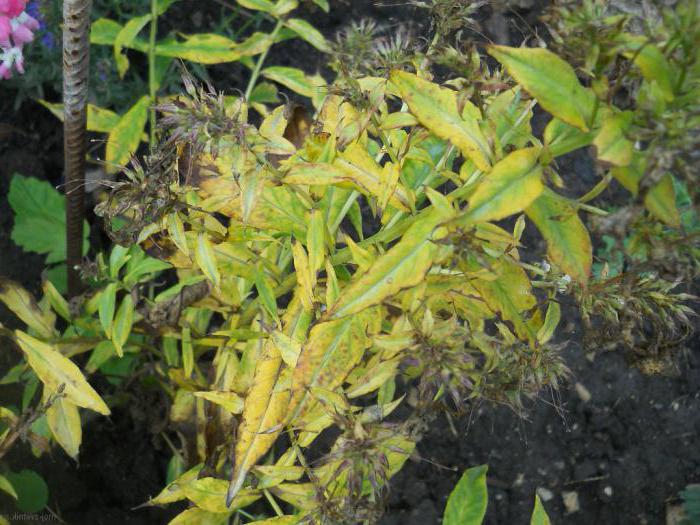

Variegated
This is the most dangerous virus that can instantly destroy a tough-looking bush. The fact that it is infected with variegated leaves is indicated by the appearance of light stripes of different widths on inflorescences and leaves.
The virus first deforms the petals, changing their color, then completely destroys them in a short period. But before dying, the flower manages to infect neighboring plants with the help of pollen, seeds, insects, tools.


This disease can be quickly recognized by comparing the color of the greenery or inflorescence with a photograph of this variety. But only a detailed examination in the laboratory will give an accurate result.
If the petals are white, then in this case, carefully examine its peephole. In a healthy person, the eyes will have a distinct border, and in those infected with variegated leaves, the borders are erased, that is, the color of the eye merges with the white petals.
Every year, breeders release new varieties of phlox, therefore, at the time of purchase, it is recommended to carefully compare the color of the flower with a photograph of this variety, otherwise the risk of acquiring a diseased plant from unscrupulous sellers increases, thus ruining the entire home collection of indoor flowers.
It is especially difficult to recognize this viral disease in varieties that initially have a variegated color. In this case, we carefully look at the stripes. In the patient, they should be expanded towards the end, periodically interrupting. A healthy one has even stripes.
Unfortunately, there is no cure for this virus. It remains only to dig up and destroy the infected bush, and throw the earth away, or even better, burn it.
Then thoroughly disinfect the pot and tools. Then, for a month, it is recommended to carefully observe the other plants in this room, whether they have had time to become infected with this virus. If the flower grew on the street, then you need to carefully examine all the greenery growing around it, whether the virus has been transmitted to them.
Spring transplant and care
Phlox diseases will recede if the plant is provided with the necessary conditions for it. That is why today we tell you in detail how to provide care for these flowers. The optimal time for a transplant is the end of April. In this case, it is imperative to remember that the root system must not be overdried.That is, the transplant should be performed as quickly as possible, the soil is well watered. And the landing site is protected from the bright sun. If these conditions are not met, the plants will be very sick and will not be able to fully grow and develop.
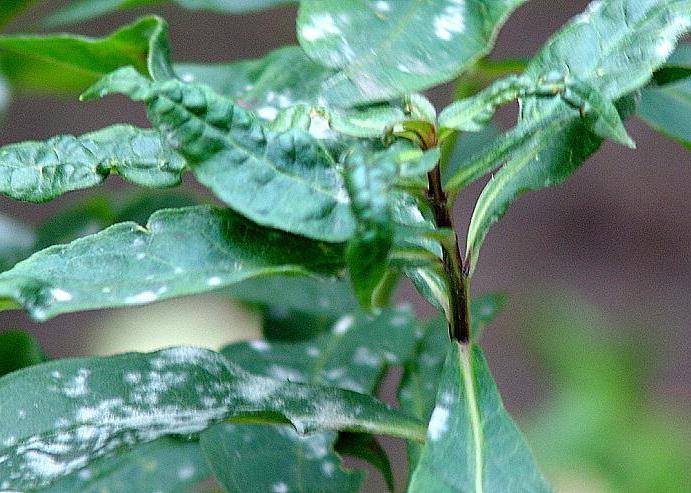

Care and transplant in the fall
Planting and leaving are very strongly interrelated (especially if we are talking about phlox). Diseases in such unpretentious plants usually develop only in case of serious violations of the rules of agricultural technology. It is best to transplant before mid-August. If you managed to get a plant a little later, then it is better not to plant it, but to dig it in the area to a depth of 25 cm. The seedlings are covered with mulch and dense covering material. Do not forget that it is at the beginning of September that the plants form buds on the basal necks. With proper care, the plants will take root well and give great bloom next year.
Prophylaxis
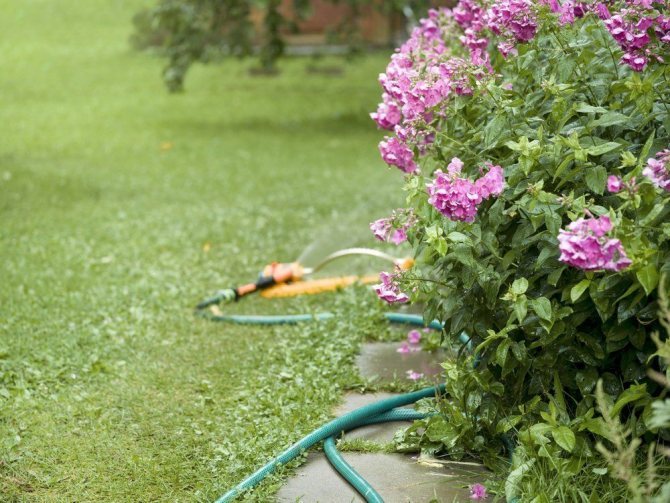

Let's get acquainted with preventive measures aimed at preventing phlox diseases.
Soil composition
Phlox should be grown in a slightly acidic substrate. If the soil is thoroughly acidified, this alone can be a significant cause of frequent plant diseases. It has already been scientifically proven that an acidic environment is ideal for the rapid multiplication of pathogenic fungi.
Features of autumn care
Today we will talk in detail about phlox diseases, and the fight against them will be dealt with in parallel. But first you need to finish with the features of care, since the disease is easier to prevent than to cure. I must say that this flower is completely unpretentious. It is very important for him to regularly water and cut off flowering inflorescences, as well as dried twigs. In all other respects, the flower is not picky. However, in order for the flowers to be truly bright and large, it is necessary to feed on time. For the entire vegetative period, it will be necessary to make 5-6 fertilizing of plants for enhanced growth, budding and preparation for winter. All subcortexes are divided into root and foliar. The second method is preferable in the summer, for this it is necessary to make a solution of nutrients that can be sprayed on the leaves of the plant. However, with the onset of autumn, you need to make good root feeding. This is especially true for those plants that have been in the same place for many years in a row. Manure or a liquid mullein tincture will help the plants become stronger, more resilient and more blooming.


Verticillary wilting
The disease hides in the roots of the plant. The causative agent is a microscopic fungus that clogs the vascular vessels in the plant stem. The disease causes irreparable damage to the plant, but fortunately it is rare in cool climates.
In the midst of flowering, foliage begins to wither. Watering and spraying with Bordeaux liquid does not help. The hallmark of verticillosis will be healthy, erect stems, free of spots or other signs of disease, while the leaves curl and turn yellow, but remain firmly attached to the stem.
If you tear off such a leaf, it turns out that the petiole inside has become brown - this is how the vessels clogged by the mycelium look like. But soon the stems also lose their turgor, lie down, turn yellow and dry out. As a result, the bush completely dies in one season.
Preparing for winter
This is a very important step in preventing many phlox diseases. A photo taken by professional gardeners allows us to say that phlox, properly prepared for winter, come out from under the snow strong and strong. In order for the phlox to winter calmly, it is necessary to cut off the ground part at the end of autumn at the end of autumn. Most gardeners do this, leaving only low stumps, about 15 cm in height. Experts also recommend to level the plant with the ground level. This is when it will be able to winter best.In the first version, various pests and spores with diseases will be able to winter on the stumps. The second option excludes such a possibility, which is why phlox diseases and the fight against them are minimized. A photo of a flower bed, which was trimmed according to all the rules, looks much more spectacular than one that was not trimmed for the winter. Pruning is done at the end of October, when the weather is cold outside. In this case, the base of the phlox and the soil around it must be treated with agents against various diseases. After that, you will need to wait about 10 days and mulch the planting site well. This set of measures will allow the plant to winter well, and will also serve as an excellent preventive measure against various diseases.
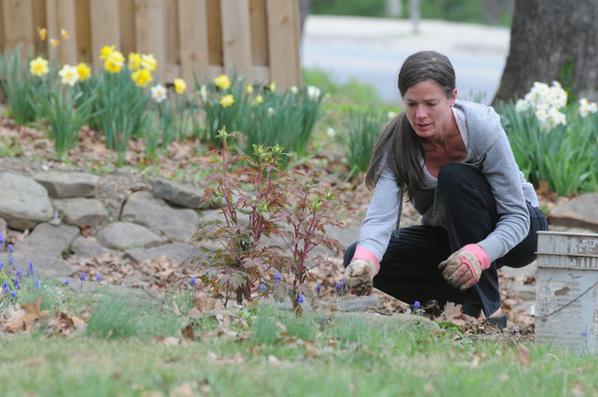

Wintering in the basement
Many gardeners who have already encountered such an unpleasant phenomenon as diseases of perennial phloxes prefer to dig them up for the winter. For this, special buckets and boxes are prepared, in which the soil is placed, and ventures and plants with a lump of earth. This process is very time consuming. It is necessary not only to dig up and transfer the bush to the basement, but also to create suitable conditions. It shouldn't be too warm or cold, damp or dry. Any of these kinks can kill your plant. Therefore, this method can be considered too complicated and difficult, it is much easier to just cover the plant well, for example, with a bucket of sawdust or humus. It is best to do this in early October, at which time the soil is still warm enough. In the spring, you will need to carefully remove the embankment from the bush.
Stem cracking
If an open vertical crack appears on the stems of the phlox, and the shoots have died along with the inflorescences. Do not be alarmed, this is not a contagious disease.
The reason for the appearance of a crack on the stem is too rapid growth of the plant. But they can appear due to excessive amounts of nitrogen fertilizers. It is necessary to reduce feeding. They can also crack if not watered for a long time in hot weather.
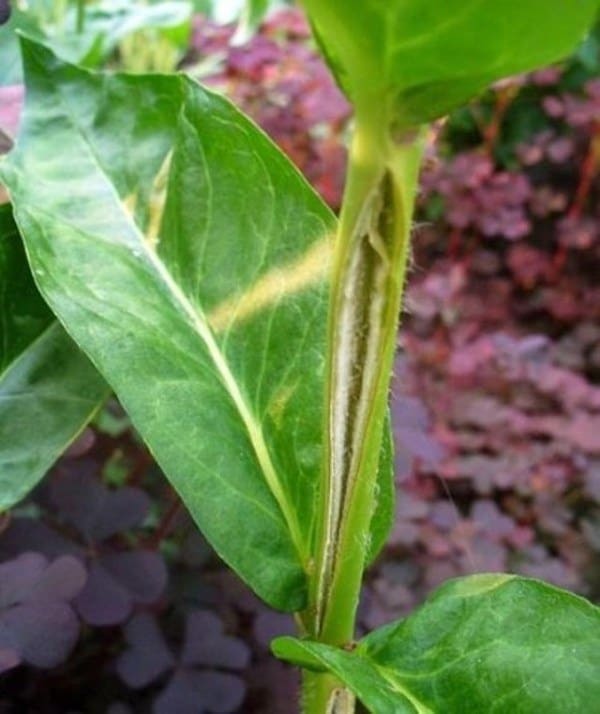

What phloxes can hurt
This is actually a very broad topic. There are a variety of phlox diseases. A photo of an infected plant is always very different from healthy counterparts, so even a layman can easily distinguish it. Despite the fact that phloxes are considered quite resistant to diseases and pests, under bad conditions they are successfully affected by viral and fungal, as well as mycoplasma diseases. The very first sign of a disease is an underdeveloped plant species. The sizes and shapes of all parts of the affected plants change. For example, it is quite easy to recognize plants affected by mycoplasma: they have a small leaf size and chlorosis, modified parts of plants, and a different color of buds. In addition to diseases, phloxes can be attacked by pests such as nematodes, slugs, caterpillars, cruciferous fleas and pennies. Let's continue to consider the topic of how to recognize an ailment and cure phlox. Diseases, the treatment of which is possible, we will cite below, in all other cases, only uprooting the diseased bush and disinfecting the soil will help.
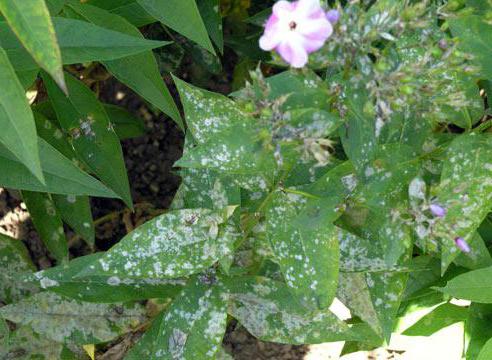

Nematode
Nematoda is a dangerous pest that lives and hibernates in the soil. In the warm season, nematodes rise along the vessels of the stem to the upper, young parts of the shoots and feed on the sap of the plant. For wintering, nematodes descend into the rhizome.
The result of nematode damage will be twisted stems with ugly swellings, twisted, wrinkled leaves. The stem becomes brittle and breaks easily.
For prevention purposes, rotted straw manure is added to the soil. It is impossible to expel nematodes from an infected bush, therefore it is dug up and destroyed.
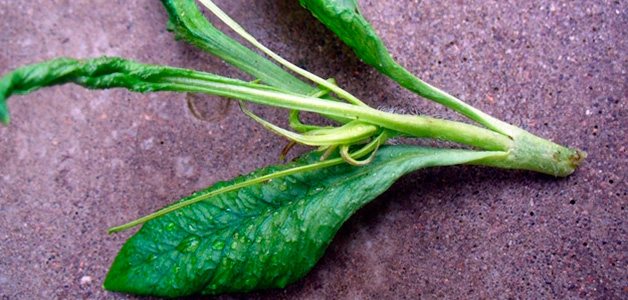

You can try to preserve a valuable variety in the following way:
- Remove the most curved stems from the diseased bush.
- In early spring, while the worms are still sitting in the rhizome, break off seemingly healthy shoots no more than 4 cm high.
- Rinse under running tap or hose.
- Plant shoots under cover.
- Dig up the mother liquor and burn.
Viral diseases of phlox
It is very difficult to treat them, so it is much easier to carry out prophylaxis on time. For this, there are quite a lot of antiviral drugs on the market today. They are quite inexpensive, but at the same time they allow you to completely protect phloxes. Diseases, the treatment of which boils down to the complete removal and burning of the bush, must be anticipated from early spring. Diseases such as:
- Rattle - light spots appear on the leaves. Gradually, they die off. Like all other viral diseases, it cannot be cured. You just have to regularly check the planting and carry out preventive treatment with "Fitosporin" and similar preparations. Before planting, it is necessary to treat the soil to destroy the pests that most often carry viruses.
- Curly - the leaves take on an ugly shape. Spots and scabs appear on them, the stems are deformed, and the buds do not bloom. In the early stages of this disease, it is necessary to spray the bushes with the preparation "Skor".
- Necrotic spotting is another formidable disease that can deprive you of a beautiful flower bed. The first signs are brown spots on the leaves. They spread quickly enough, so immediately remove the diseased plant, and spill the soil with Fitosporin, it is advisable to additionally use Karbofuran. These are phlox viral diseases and the fight against them. A photo of any flower infected with a virus has such striking differences from similar specimens without a disease that even a novice florist can easily notice them and take action.
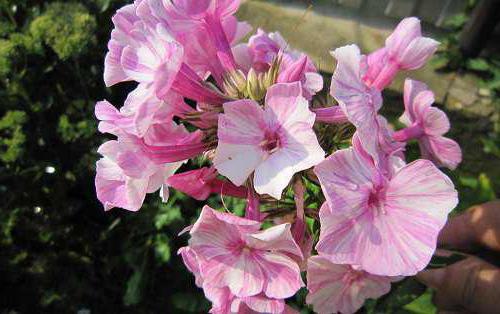

Rust
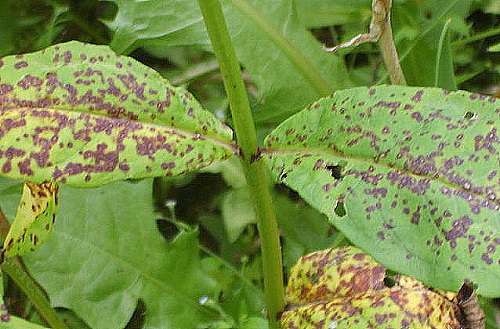

This disease appears in June as rusty brown spots. Then these spots begin to spread and eventually completely cover the entire leaf plate. The plant loses leaves, starting from the bottom of the stem, and gradually becomes bare.
For the prevention and treatment of this disease, we spray the bushes themselves, as well as the soil around them, with solutions of Bordeaux liquid, copper oxychloride, ferrous sulfate in accordance with the instructions for these drugs.
Phlox fungal diseases
As dangerous as viruses are, the most common diseases are fungi. These microorganisms are activated with the onset of warm and damp weather, that is, the summer period is just the most suitable period. We will consider the most common phlox diseases and their treatment.
- Fomoz - during the period of bud formation and flowering, the leaves cluster and turn yellow. That is, your flower bed is losing its main beauty just before our eyes. The base of the stem becomes brown and cracked. For early treatment, Bordeaux liquid may be suitable. Processing is done 4 times after 10 days, then the stems are cut as short as possible.
- Septoria - it is one of the first in the list of phlox diseases and their treatment. A photo of affected plants allows you to quickly identify this ailment. Usually gray spots appear on the underside of the leaves first. They are outlined by a brown border. To combat the disease, the plants are treated with Profit.
- Powdery mildew is a disease so common that there is little need to talk about it. Most often, plants are attacked at the end of summer. Whitish spots form on the leaves of phlox. Over time, they merge into one large, and the infected leaves curl up. To combat this disease, Bordeaux liquid and copper oxychloride, a solution of colloidal sulfur are used. In addition, there are very effective drugs, these are Oxyhom, Hom, Abiga-peak.
- Rust - Unlike powdery mildew, it usually shows itself in the early days of summer. When considering the topic "Perennial phlox", planting and care, diseases caused by fungal diseases attract attention in the first place.Every gardener has seen rust on his plants. Its signs are brown spots on the leaves. Diseased leaves dry out quickly, and the infected plant dies. Sick stems must be burned, the rest of the flowers and plants in the flower beds must be treated using Bordeaux liquid (1%) and copper oxychloride (6%). Copper sulfate is used for spraying phlox.
How does the disease manifest itself?
At the very beginning of the last month of summer, white bloom can be found on the flowers. It is not difficult to notice it, the lesions are literally striking. If left unchecked, the disease will quickly disfigure the lush bushes of flowers.
Powdery mildew is real and false.
Both types of disease are provoked by a fungus. The false variety occurs at high humidity against the background of moderate temperature indicators, the real one - in dry weather with sharp jumps in temperature and humidity.


How to understand that phloxes are sick with powdery mildew:
- the upper surface of the leaves is covered with a whitish bloom;
- the structure of the plaque resembles felt or a very dense web;
- plaque primarily forms on the lower leaves, after which it passes to the young growth;
- dark brown spots form on both sides of the leaf - these are the formations of the mycelium, hence the spores of the fungus spread;
- the spots grow very quickly, merge, form extensive zones of damage;
- the leaves dry up, after which the fungus attacks the stems and inflorescences.


Powdery mildew is undemanding to the conditions for its development: it attacks plants quickly, expanding the boundaries of the lesion every day.
And more often it is young plants that have not yet managed to build up a special protective layer that become its victims. As soon as a lesion is found, the diseased parts of the plant must be removed immediately. Fortunately, the disease can be treated, and if treatment is started on time, it will be successful.


Mycoplasma diseases of phlox
They are not so common, so often the summer resident has no experience how to cope with them. It is today that we analyze in detail the features of such garden plants as perennial phlox. Planting and care, photos, diseases - all this must be studied so that your flower bed is always lush and beautiful. Among mycoplasma diseases, jaundice should be distinguished. The first signs of this disease are developmental delay. The leaves of the plant become discolored, in addition, they change their shape. In this case, the stems are covered with numerous lateral shoots, and the petals and stamens are reborn. Diseased plants are destroyed. For prophylaxis, you can spray the flower beds with "Fundazol", passing through the neighboring flowers. Phloxes, diseases to which do not stick too intensively, fall ill in the flowerbed very last, so there is always a chance to have time to stop the disease in time.


Powdery Mildew Signs
This fungal disease is common among phlox. It is popularly called ashes or linen. The infection often spreads downwind. Sucking pests - thrips, mealy worm, whitefly - are vectors. The fungus can get on the flower with contaminated water or through the hands.
Midges in orchids: how to get rid of at home and how to treat
Signs of illness:
- white bloom on leaves, stem and flower;
- drying and curling petals;
- the death of a plant as a whole or its individual parts.
Note! If the fight against powdery mildew does not work, it is better to cut off the infected areas or the entire flower. This will protect neighboring flowers from infection.
Phlox pests
There are many insects that are quite to the taste of phlox. Diseases and pests are two phenomena that smoothly flow into one another. Many viruses and fungi are carried by insects - pests, so by treating a flower garden from one misfortune, you simultaneously save it from another.Phlox is often affected by the black cruciferous flea. It can be visually distinguished on the trunk: these are small bugs that run, fly and jump. Pests scrape off the top layer of the leaf plate, which is why it becomes covered with spots and holes. For prophylaxis, we dust the plants with wood ash.
The most formidable pests are nematodes, despite the fact that they love phlox. Care (diseases caused by pests are not always curable) is to maintain the vigor of the plant and drive the pests out of its tissues. To do this, use the drugs "Fenamifos", "Carbofuran" and some others. Microscopic nematodes live in different parts of the plant, sucking out its juice and disrupting all physiological processes. In places of their large accumulation on the trunk and leaves, swellings are formed. Leaves lose their shape, inflorescences do not develop. A heavily affected plant must be removed and burned, and the soil must be treated with the preparations presented above.
Today we examined phlox diseases and the fight against them. As you take care of your garden, you celebrate the condition of your plants every day. If the flowerbed changes its appearance before our eyes, then something is happening. It is necessary to compare the symptoms with those presented today in our article and choose measures for the treatment of this disease. If you start it, all that remains is to uproot the flower bed, cultivate the land and only then plant new phlox. Therefore, it is important to carry out preventive treatments on time.

